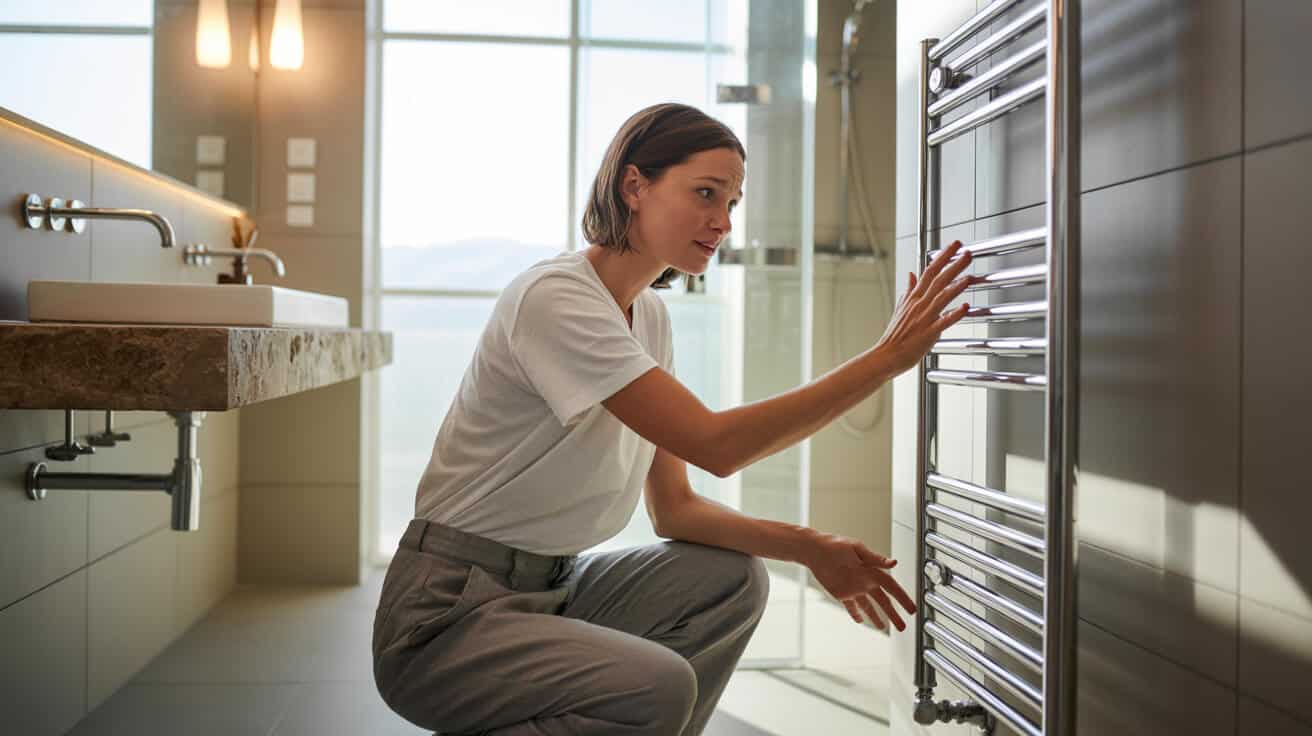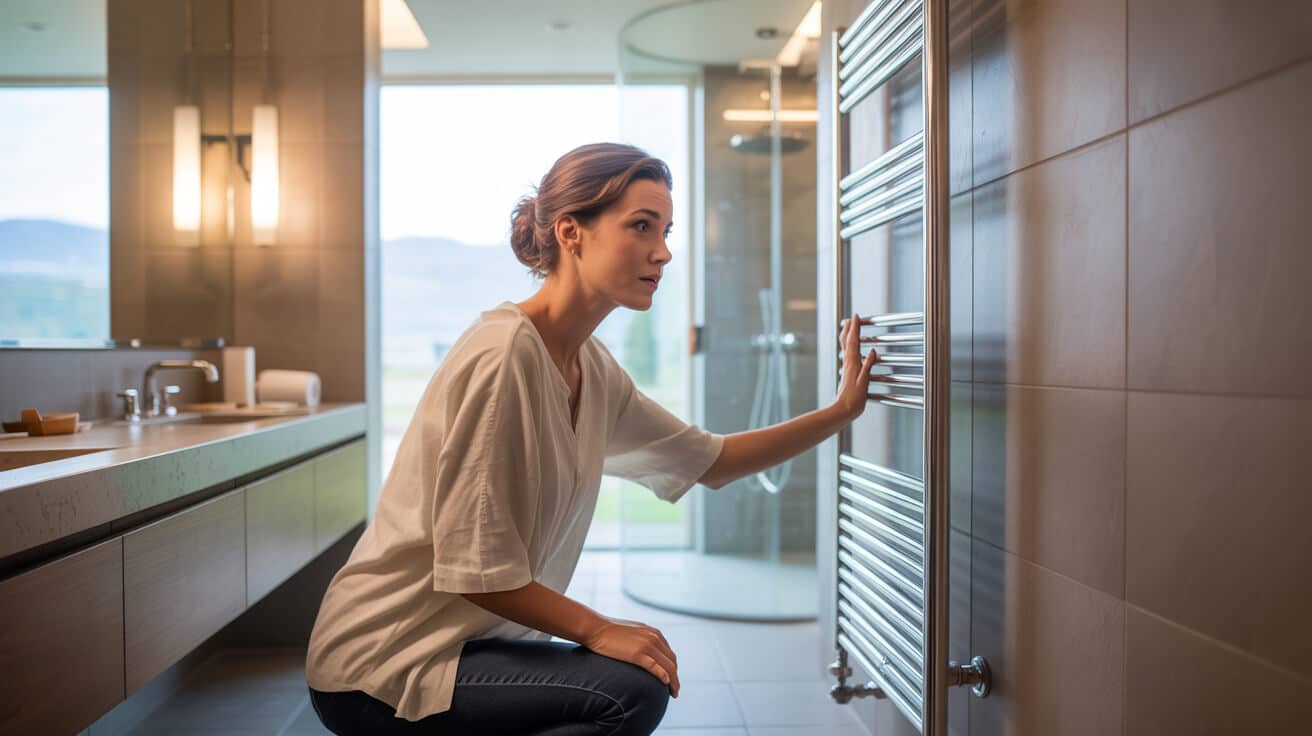Distinct from casual or temporary temperature fluctuations, heating system failures represent significant functional disruptions, potentially exposing occupants to discomfort, heightened energy expenditure, property deterioration, or legal noncompliance. Troubleshooting services work at the juncture of engineering, user experience, and policy, making use of formalised protocols, advanced diagnostics, comprehensive documentation, and a multi-actor stakeholder landscape. As heating systems grow in both complexity and integration, solutions must synthesise technical knowledge with transparent communication and a deep appreciation of user needs.
Etymology or name origin
The concept of troubleshooting emerged from early engineering domains where manual labour and observation were fundamental to identifying the locus of failure—the so-called “trouble”—with “shooting” signifying targeted intervention. Over time, as mechanical and electrical systems proliferated in the built environment, “troubleshooting” evolved to encompass structured, often codified processes set forth in technical manuals and service guidelines. Within plumbing and heating, the term is synonymous with fault detection, root cause analysis, and systematic remedy—a lexicon reinforced by regulatory documentation and vocational education. Related terms include “fault-finding,” “service remediation,” and “diagnostic intervention.”
Overview / context
Heating reliability is vital for building safety, public health, and asset preservation. In most developed societies, regulatory codes mandate minimum ambient temperatures in dwellings and workplaces, elevating heating interruption to an urgent matter with legal and human ramifications. System complexity varies widely, from simple single-boiler domestic installations to multi-zone commercial hybrids managed via building control systems.
Within this context, property type and occupancy status shape both troubleshooting priorities and permissible actions. Homeowners seek rapid resolution and asset protection; landlords are legally accountable for timely restoration; property managers must orchestrate resources across portfolios; tenants look for assurance and recourse pathways. Facility engineers emphasise compliance and procedural certainty.
Plumbers 4U, for example, structures service protocols to maximise safety, clarity, and compliance across this spectrum, tailoring approaches for diverse asset classes and regulatory exposures.
Key system environments
- Residential (owner-occupied): Focuses on personal comfort, asset protection, and energy efficiency.
- Residential (rented): Extends to legal duty of care and time-critical repair obligations.
- Commercial and public: Centres on business continuity, compliance reporting, and health and safety mandates.
- Multi-unit buildings: Presents unique challenges around plant access, multi-stakeholder coordination, and allocation of liability.
Stakeholder engagement
- Homeowners: Desire transparency, assurance, and cost clarity.
- Landlords/agents: Prioritise legal protection and tenant relations.
- Property managers: Focus on operational efficiency and SLA compliance.
- Tenants: Need rapid, clear communication and issue resolution.
- Engineers: Require procedural support, safety protocols, and clear documentation mandates.
History
Early approaches
Domestic heating originated in individual fireplaces and rudimentary stoves. Fault identification relied upon direct observation—sight, touch, smell, or mechanical noise. The advent of closed-loop boiler systems in the nineteenth century enabled centralised heat, but also introduced new points of potential failure: coal blockages, airlocks, valve corrosion.
Industrial emergence
The 20th century marked widespread adoption of pressurised radiators, thermostatic controls, and piped distribution. Manufacturer standardisation, the professionalisation of installer and repair trades, and the formation of oversight bodies (e.g., British Standards) improved serviceability while creating new documentation and record-keeping requirements. The promulgation of gas safety regulations, especially after high-profile carbon monoxide incidents, drove further formalisation, including the emergence of service logbooks and periodic compliance inspection.
Contemporary evolution
In modern times, the integration of electronic fault codes, programmable controls, and app-based interfaces has transformed the troubleshooting landscape. Digital displays guide diagnostic efforts, while mandated certifications (e.g., Gas Safe Register in the UK) and documentation such as the CP12 Landlord Gas Safety Certificate codify expectations. As heating technologies diversify to incorporate renewables and variable fuel assets, troubleshooting professionalism has expanded, underpinned by ongoing training and knowledge-sharing within professional bodies like the Chartered Institute of Plumbing and Heating Engineering (CIPHE).

Concept / description
Heating system malfunction can manifest as total or partial heat loss, inability to reach setpoint temperatures, unresponsive controls, or localised failures such as single radiator outages. The failure may be continuous or intermittent, and may affect only certain zones in properties with multi-loop piping or advanced control systems.
Troubleshooting in this context is defined by layered analysis:
- Symptom Assessment: Physical observation (e.g., room temperature, radiator touch, error lights).
- User Query: Structured data collection—when did the issue begin, what has changed, recent work, distinguishing hot water and heating failures.
- Systematic Diagnosis: Stepwise elimination of possible causes, beginning with the most likely or least invasive.
- Targeted Remediation: Replacement or repair of identified faulty components or restoration of settings.
- Functional Verification: Observation of system recovery, confirmation of restored heating capacity.
- Documentation and Communication: Complete, accurate records for regulatory, warranty, and user assurance.
Key to effective troubleshooting is the sequencing of actions to minimise disruption, risk, and downstream failures. Professional service providers segment this workflow in granular checklists, ensuring consistent, reproducible results.
Functionality / purpose / applications
Heating troubleshooting aims to rapidly restore safe, effective heat with the least disruption, while mitigating secondary risks such as property damage, occupant discomfort, or future failures.
Key functions
- Restoration of comfort: Ensures your property meets standard temperature thresholds and mitigates distress.
- Prevention of consequential damage: Unheated pipes are vulnerable to freezing and bursting, especially in colder environments.
- Legal and compliance assurance: Service logs and repair documentation support your legal standing as an owner or landlord.
- System longevity and cost control: Correct identification and remedy of root causes prevents recurrence and extends equipment life.
Application scenarios
| Persona/Role | Typical Use Case |
|---|---|
| Homeowner | Diagnosing and resolving cold spots before freezing weather |
| Landlord/Agent | Meeting statutory restoration timelines for tenants |
| Property Manager | Scheduling batch diagnosis in multi-unit portfolios |
| Tenant | Reporting symptoms and documenting service response |
| Facilities Director | Pre-emptive diagnostic audits for critical venues |
Classifications / types / variants
System architectures
- Central heating (“wet”): Closed-loop boilers delivering hot water to radiators or underfloor pipes. Faults may present as pressure loss, airlocks, or single-point component failure.
- Underfloor heating: Hydronic or electric mat systems. Troubles are frequently associated with flow discrepancies, sensor placement, or insulation failures.
- Warm-air systems: Forced air, largely commercial or historic residential. Susceptible to fan, philtre, or ducting problems.
Control types
- Manual: Standalone thermostats and TRVs. User error is a frequent issue (settings, mechanical wear).
- Programmable/digital: Dependent on timers, relays, and electronic interfaces. Prone to settings drift and electrical faults.
- Smart: Wireless, app-integrated, or voice-controlled systems. Challenges include connectivity loss, battery depletion, or firmware mismatches.
Fuel sources
- Gas: Requires Gas Safe-certified intervention; most widely used in UK.
- Electric: Direct-acting or heat-pump based, involves different diagnostic tools.
- Oil/LPG: Rural supply; unique tank, pipe, and burner vulnerabilities.
Building context
- Single-family: Full control and access.
- Multi-unit: Zoned controls, shared plant, more complex reporting and scheduling.
- Commercial/heritage: Diverse system age, integration of modern and legacy components.
Systems / tools / methodologies
Diagnostic process
- End-user checklist:
- Confirm heating mode is selected.
- Check programmer or thermostat settings.
- Observe error codes or fault lights.
- Inspect relevant fuses, breakers, or batteries.
- Confirm radiator valves are open and accessible.
- Service company triage:
- Structured phone or app-based pre-visit survey.
- Identification of safety risks—gas, water leak, live electricals, or vulnerable occupants.
- Priority scheduling for emergencies.
- Engineer interventions:
- Sequential elimination protocols: power > control > pressure > flow > zone.
- Use of pressure gauge, multimeter, bleed key, thermal camera as appropriate.
- Access to proprietary error code libraries and manufacturer technical documentation.
Methodologies
- Visual induction: Survey all visible parts, trace pipework, identify consistent symptoms.
- Stepwise exclusion: Systematically test and isolate non-functioning elements, working from the main supply to controlled appliances and outlets.
- Post-repair verification: Ensure restoration via node-by-node testing, typically logged digitally.
| Tool/Technique | Application |
|---|---|
| Pressure gauge | Identifies pressure drops and filling issues |
| Multimeter/testers | Tests live circuits, stat signals |
| Bleed key | Removes trapped air causing local cold spots |
| Error code reference | Supports accurate, brand-specific diagnosis |
| thermal imaging | Spot hidden airlocks, flow imbalances |
| Service logbook | Ensures compliance, warranty protection |

Stakeholders / entities involved
Service providers
- Engineers and technicians: Typically Gas Safe, CIPHE, or manufacturer-accredited; responsible for diagnosis, documentation, and compliance adherence.
- Dispatch/customer service: Triage cases, coordinate scheduling, and serve as your communication bridge.
- Specialist contractors: For advanced or high-value projects, subcontracted through vetted frameworks.
Clients
- Homeowners: Seek reassurance, transparent pricing, and preventative advice.
- Landlords/agents: Prioritise statutory repair timelines, tenant satisfaction, and legal defence.
- Property managers: Handle high-volume coordination and prioritise by severity, vulnerability, or business schedule.
- Tenants: Rely upon responsive reporting systems and expect follow-through.
- Facility managers: Balance business continuity with stakeholder (e.g., board of governors, public authority) communication.
Regulatory and standards bodies
- Gas Safe Register, OFTEC, CIPHE: Authorise legal interventions and service standards.
- Local authorities: Enforce public safety and compliance with heating codes.
- Warranty providers: Establish benchmarking and reporting requirements.
Support roles
- Customer support: Manage communication, updates, and closure notes.
- Compliance managers/facilities directors: Monitor larger portfolios, maintaining compliance and strategic risk assessments.
Legal / regulatory / ethical considerations
Gas safety and legal compliance
- All gas-related repairs must be executed by engineers with valid Gas Safe credentials; evidence is required for insurance and gapless warranty coverage.
- For landlords, annual CP12 certification is mandatory in the UK, and immediate response is required for confirmed heating outages in tenanted dwellings.
Landlord and agent responsibilities
Landlords must:
- Maintain safe, operable heating at all times.
- Record all interventions and provide certificates to tenants.
- Arrange rapid repairs, especially in the presence of young, elderly, or vulnerable tenants.
- Observe all local authority escalation protocols for unresolved outages.
Tenant rights
- Entitlement to statutory temperature standards (e.g., 18°C–21°C in habitable spaces).
- Formal complaint and escalation procedures via environmental health if repair deadlines are not met.
Documentation, reporting, and privacy
- Engineers and companies must keep accurate job records, photographs, fault codes, and closure signatures.
- Data must be stored securely, especially in multi-occupancy or publicly funded housing.
Performance metrics / data / measurements
Service measurement fundamentals
- First-time fix rates: Measure of efficient, accurate diagnosis.
- Time-to-attend: From fault report to engineer arrival, stratified by asset and urgency class.
- Restoration intervals: Time between initial attendance and fully restored function.
- Recurrence rates: Percentage of jobs reopening or requiring follow-on intervention.
Quality assurance
- Service audits typically include analysis of failure patterns (by age, make, model).
- Client satisfaction surveys, tenant feedback, and external audits enable continuous professional development.
- Detailed logs and certification trails are used for performance benchmarking and insurance audits.
Challenges / barriers / limitations
Technical and operational
- Legacy systems present incompatibilities that delay diagnostics, especially where historic parts are out of stock.
- New building types (e.g., high-rise with plant rooms) may have restricted access or require advanced tools.
- During high-demand (e.g., winter cold snaps), spare part availability and logistics are often strained.
Social and economic
- Significant repairs may test financial capacity, particularly for low-income landlords or owner-occupiers.
- Social housing and older buildings are at higher risk for prolonged outages.
Compliance and documentation
- Changes in compliance may demand new training or system upgrades, with enforcement timelines that can impose operational strain.
- Increasing regulatory burden requires robust digital systems and ongoing upskilling.
Impact / influence / legacy
Health, safety, and resilience
- Proactive troubleshooting prevents medical risks associated with hypothermia, respiratory conditions, and unsafe heating improvisations.
- The availability of reliable heating is foundational to societal well-being, influencing mental health, productivity, and educational attendance in schools.
Property and asset
- Preserving building fabric by preventing cold-induced damage (e.g. mould, burst pipes) protects both your investment and neighbourhood stability.
- Companies that demonstrate a record of compliance and transparent reporting, such as Plumbers 4U, set higher baselines for future contracts and landlord panels.
Social and professional impact
- High-integrity service restores trust in property management, encourages sharing of best practices, and positions certified engineers as pillars of community safety.
Future directions, cultural relevance, and design discourse
Advancements in system architecture, predictive maintenance technologies, and digitally integrated controls are converging to transform the discipline. The integration of more robust compliance measures and stronger tenant rights is increasing scrutiny and raising the standard for professional service in both public and private markets.
Culturally, the significance of heating reliability has evolved from background necessity to central marker of housing quality, landlord integrity, and neighbourhood viability. Design conversations increasingly prioritise resilience, ease of monitoring, and mechanisms for empowering users to self-diagnose and escalate service requests rapidly. Service providers who lead in transparency, proactive communication, and compliance culture are likely to shape norms and expectations for decades to come.

